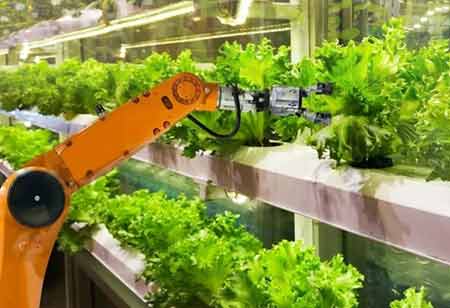Thank you for Subscribing to Food Business Review Weekly Brief
- Home
- Topics
- Alternative Proteins and Plant Based Food
- Beer and Wine
- Canned Beverages
- Coffee And Tea
- Food and Beverage Consulting
- Food and Beverage Financial Service
- Food And Beverages Marketing
- Food Distributors
- Food Ingredients
- Food Sustainability
- Plant Based Food and Beverages
- Seafood Suppliers
- Supplement Manufacturing
- Wine Investment
- News
- Vendor Viewpoint
- CXO Insights
- Conferences
- Newsletter
- CXO Awards
-
Application Of Digital Innovation To Combat Food Waste
Global food output for Food loss and waste account for approximately one-third. However, finding a solution is always not easier.

By
Food Business Review | Thursday, April 01, 2021
Stay ahead of the industry with exclusive feature stories on the top companies, expert insights and the latest news delivered straight to your inbox. Subscribe today.

Digital solutions enable the change in the food market and the advancement of sustainability.
FREMONT, CA: Global food output for Food loss and waste account for approximately one-third. However, finding a solution is always not easier. Typical methods like questionnaires and garbage collection measurements are not always enough to minimize food waste. As a result of the problems of consumer decision-making, it is incredibly difficult to find the main causes actions of a person. Across the entire food supply chain, many issues need to be addressed.
Sufficient work must ensure that the market accurately reflects negative environmental consequences. The food market might be transformed and made more supportable through digital solutions.
Already, the food consumption market has enfolded innovations digitally. Nowadays, users use smartphone applications to monitor their purchases, monitor their consumption patterns, and plan meals using customized recipes. In addition, individuals can find the freshness of food by putting smart reusable sensors on food containers. Moreover, smart bins can classify waste, and smart cameras can organize food storage.
With the help of artificial intelligence, consumers and manufacturers would have access to data that exceeds what is currently available through survey methods and traditional garbage collection measurements. One of the remarkable benefits of digitization is that it makes consumer waste quantifiable and traceable by making evident concerns. Those, in turn, can help in the modification of behavior.
Additionally, the resulting quality and volume of data enable a market that extends beyond the dimensions of selling and purchasing food, allowing the participation of multiple players connected by those data. In this many-sided market, collected consumer waste data can serve as a point of clear reference for the preferences of a future consumer within the food supply chain. It will be is favorable for businesses concerning their business plans modification.
Based on those data, new business models have come to light that will benefit the customers. For example, food takeout platforms have used food consumption data to find solutions such as lower dish amounts to tackle food waste while also delivering satisfaction and cost savings. Additionally, recipes for individualized cooking stimulate a market for content production.
Food waste may be prevented by connecting data on food residue at homes and businesses with charity organizations—such as food banks—and allowing for more impartial handing out of food. Consumers can change their behavior in exchange for the promise of cost savings through better planning, more appealing rewards, or enhanced shopping experiences. By connecting all shareholders in a digital platform, smart devices or developers of applications might allure investment or profit. Finally, by organizing garbage closer to its source, smart bins can lead new life into the specialization of waste management and market expansion.These fruitful solutions are predicated on the exponential extension of data on consumer food waste, which can reinforce developing business models.






